Drum Barracks and Officers' Quarters
1863
1051 – 1055 Cary Avenue, Wilmington – map
Declared: 6/7/63
Did you know, at one time during the Civil War, there were 1,800 Union soldiers stationed in Los Angeles to control the local port and to prevent a secessionist uprising? Me, neither!
Named after Richard Coulter Drum, the Assistant Adjutant-General of the Department of the Pacific, Camp Drum was made up of twenty-two buildings spread over sixty acres in Wilmington, then called New San Pedro, about six miles in from the coast. The land was sold to the Army by Phineas Banning and B.D. Wilson, L.A.’s first mayor, who each got a dollar for the sale.
Basically, there were three main reasons for a Los Angeles camp: to react against recent Confederate movement in New Mexico and Arizona; to keep in check local secessionist sympathizers; and to secure the local port for receiving supplies and guarding it from Confederate attack. While not the first Army camp in L.A., Camp Drum served as the Army’s headquarters in the Southwest from 1861-1871.
The west side / back of the building
The buildings themselves were pre-fabricated in New England and sent by boat all the way down below the tip of South America and up the west coast to San Pedro. Being built back east is probably the main reason the Drum Barracks landmark is designed in a Federal/Greek Revival style.The extant building on Cary Avenue was used as the quarters for junior officers, with a sort of officers' club on the first floor. On the second floor, the single officers were segregated from the few married officers and their wives.
South side
By the late 1920s all of the buildings except two – the existing structure and the camp’s powder magazine – had been torn down. Bought as a home/boarding house in 1913, the last of the Camp Drum barracks ultimately fell on hard times in the 1960s. The saga to save the structure lasted three times as long as the Civil War itself. The city bought the landmark in 1966, the state took it over in 1968, but it wasn’t until 1977 when there was enough money to begin restoration. It reopened in 1987 as a Civil War library and shop, as well as a top-notch museum, covering the war both locally and nationally. Here's the official site. No indoor photography is allowed.
These rose bushes are nearly as old as the building itself.
The Drum Barracks and Officers Quarters is also State Landmark No. 169.
And what’s up with the camel? In the 1850s, U.S. Secretary of War Jefferson Davis ill-advidsedly ordered the import of camels to carry supplies, scout, and carry mail and such for the Army. Camp Drum eventually became the final destination for the camels traveling west. Of course, the camels didn’t work out and were shuttled up north for auction in 1863.
This metal statue is named Ayesha, after one of the camp’s original camels.
The definitive book on the Camp Drum has got to be Don McDowell’s The Beat of the Drum, published in 1993 by Graphic: Publishers.
One more thing. The powder magazine still stands about four blocks away from the Drum Barracks. It is Los Angeles Historic-Cultural Monument No. 249. If you’re at all interested in seeing it, I recommend you do it soon. It’s located on private property, and the owner is itchy to have it removed in order to build on the site. It’s in pretty sad shape.
HCM No. 249 - Powder Magazine, Camp Drum
Up next: The Palms-Southern Pacific Railroad Depot

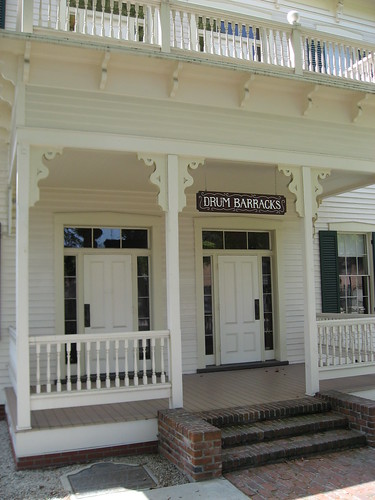
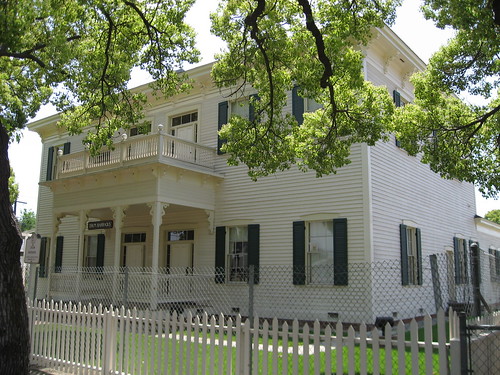
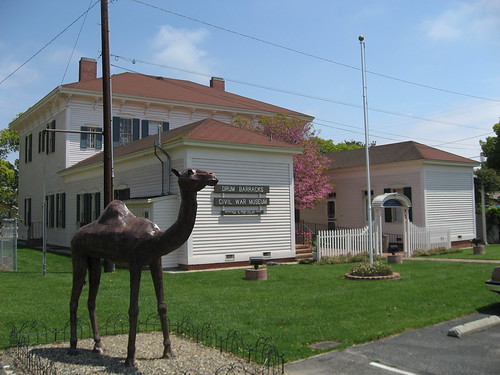
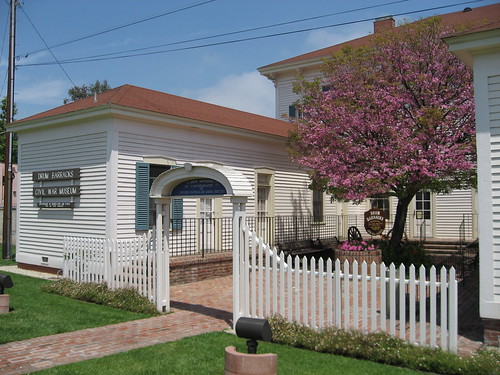
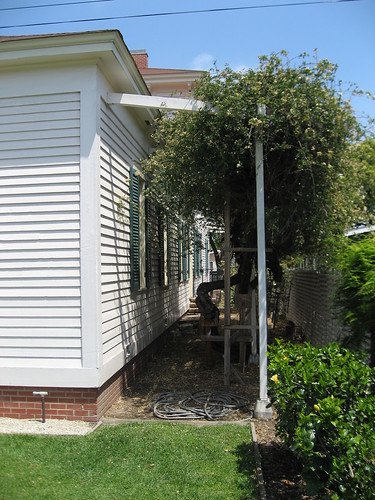

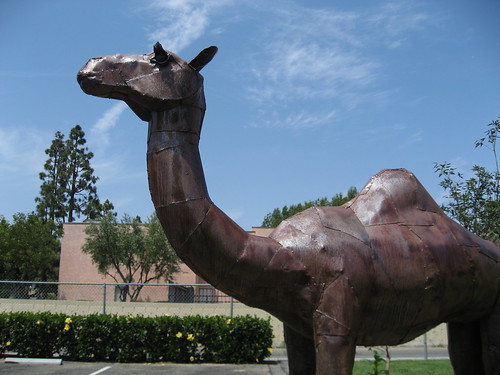
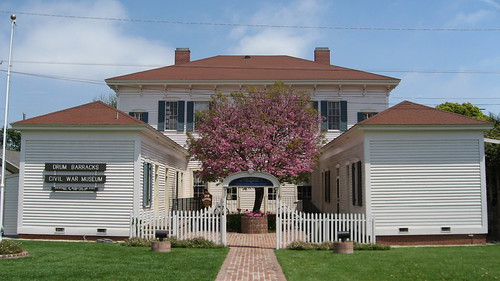
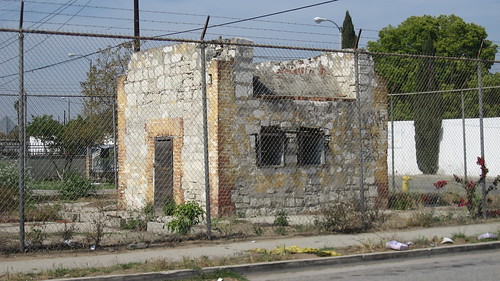

No comments:
Post a Comment